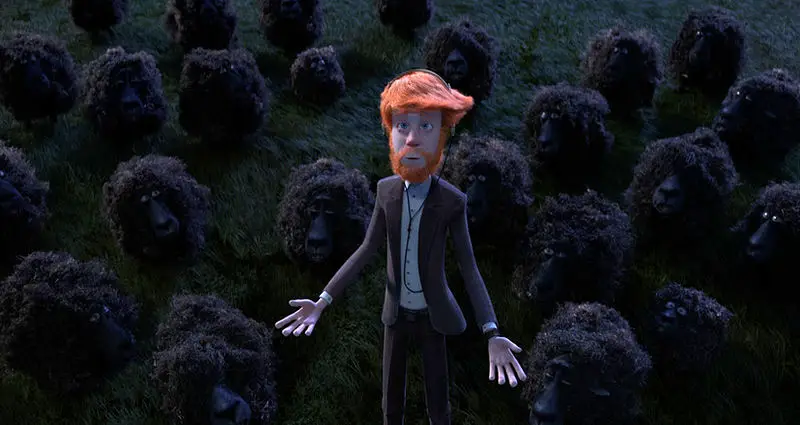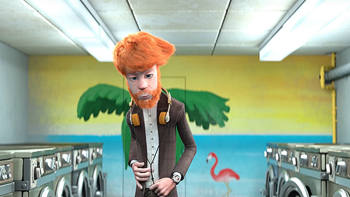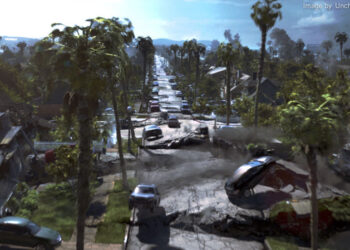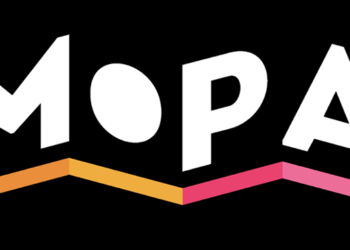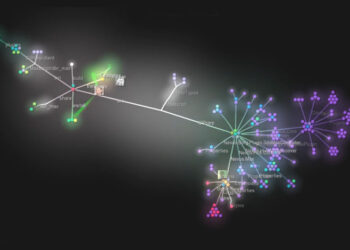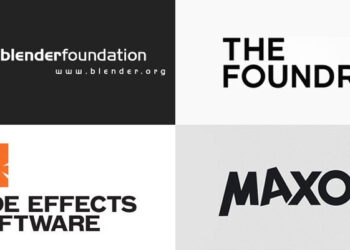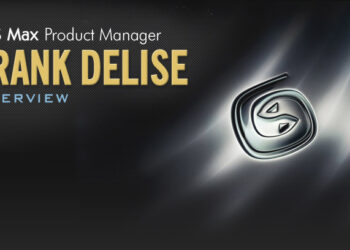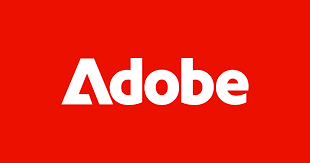What characterizes the open source production system of a film?
Everything is different !
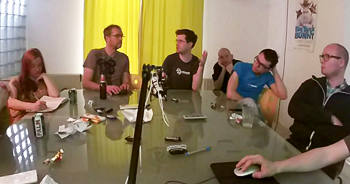
Ton Roosendaal heads one of the weekly meetings broadcasted online. From left to right: Elysia Brenner, Ton Roosendaal, Lukas Tönne, Antonis Ryakiotakis, Francesco Siddi and Andy Goralczyk
First you have to use only open source software. Luckily now there are a bunch of them that are really good for production but I suspect a few years ago it might not have been that easy. And the big problem is not the tools, it’s finding professional artists knowing how to use them. Many of them are used to other commercial packages, and artists are often not happy about learning AGAIN how to work…
Also you have to use only creative commons content or free to use elements because everything has to be shared later on. This is also something most artists aren’t really used to either. But this is actually a very good and clear process. It forces you to create and share a lot of assets and tools. So everyone benefits from this. It also helps you as an artist to work more cleanly knowing someone else will be using them later on.
And finally you have to share and show everything you do, as you do it, online. This has its pros and cons. Having realtime feedback on unfinished work from anyone has the potential of being disturbing and ruin the confidence you have on what you do. But it can also be a very good source of information, when you succeed at not taking criticism and insults (or over supportive remarks too) personally. It’s a realtime test audience and it’s of great value if you can handle it and manage or filter this raw feedback.
There is one thing that bothered me a bit, it’s that the open source production pipeline places the tools at the center of everything. Art and filmmaking become secondary. This was the deal on this project, it’s defined by those constraints, so there is no problem about it, but it’s something I felt fighting against in the long run.
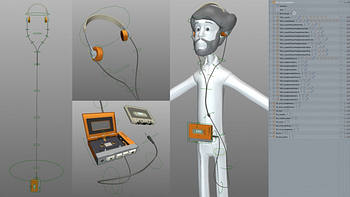
Rigging setup for the cassette player and headphones, by Manu Järvinen and Hjalti Hjálmarsson – one of the many shared assets from the film
Let’s take an example: you write a movie that takes place in the North Pole and your D.O.P. wants to use an Alexa (digital camera) to shoot it because it can deliver the look you want. But shooting digital wouldn’t be recommended because the temperatures are too low to keep the batteries and camera running, so it might be best to go for film instead. Your art direction might change. You have to discuss this with the D.O.P. : the look of the movie might change. And creatively you have to adapt to this constraint… It open doors for creativity. You have to rethink things and adapt to it.
But if you have a production that works only on digital tools, you just can’t shoot the film or do it with very bad conditions. Or you would need to change the project’s DNA and re-write the film to take place somewhere else, because there is no artistic compromise anymore. Shooting in the North Pole isn’t possible. Art becomes secondary in the decision-making because the constraints offer no real alternative.
When making a movie, technical constraints and limitations are always a problem you have to handle, but what is important I think is to decide on those based on what the movie requires, not the other way around.
So here it was the other way around. And it turns into a very clever way of trying to think outside the box and re-invent things. Also to push the tools further into development. If you take the same example as before, the BI would have to develop a camera that can shoot under the snow way below 0 degrees ! But it would need testing, a lot of extra effort and courage, and a lot of intelligence in the process. So in the end, it’s not what a filmmaker is used to, but it’s understandable and something one has to value, as it has helped push Blender development significantly and that is one of the main goals of the open movie projects.
How did you feel about the feedback the film has been receiving from the public? What comments did you get when you screened it at Pixar and Dreamworks?
I wasn’t at SIGGRAPH and LA when the crew showed the movie
at Pixar and Dreamworks so I don’t exactly know what happened there.
There were some great and kind words from CG professionals from what
they told me… Ton told me that big companies and studios
congratulated him personally, too. And we heard a lot of compliments on
the technical side, especially from people who know how hard it is to
pull a movie like that.
As for the online audience and non-professionals, the feedback
was very positive too ! For sure our movie isn’t the new “Kung Fury”,
but it wasn’t aiming to be. Of course we would have loved to have such
an online response, but the themes, the tone and poetry we tried to
have was meant to be in a feature film rhythm and perspective. So it
feels short and slow paced for a pilot, mainly because it’s not a short
film on its own…
But what I like is that most of the people that have watched
it find it original, keeping their interest until the end (and for a 10
minutes online short with such a pace it’s pretty impressive, I think
🙂 ). And they always want to see more ! Everyone keeps asking me when
the rest, or next episode, will be made.
Esther and I are very proud of the tone, the poetry and the
feeling that shines through the movie. That is something we were aiming
for more than a year ago on paper, and when we saw the final movie
together at the NFF, we were very happy to feel this and to see the
audience react to it !
The film has succeeded greatly in demonstrating Blender’s capabilities as a 3D software. Adoption of Blender has really taken off in the last couple of years, what would you attribute this to?
First to Blender itself. It’s a great tool that keeps
improving over the years because of the Blender Institute work and
Ton’s vision for it. He also has a very strong and talented team of
developers around him. They fight and work hard to make it as it is.
Secondly, I think the other software are doing a great job at
not improving, too ! CG tools are very complex, unstable, slow to work
with and to learn, ever since they were created and none of them is
really majorly improving or innovating on that. They’re just going
toward the same direction for years… Big refactors like Blender did
for 2.5 are quite rare.
Also the lack of standard formats between CG software is
annoying for the professionals that have to work with pipeline and file
exchanges every day. Pixar is going open source on that, and some
others too, so at least we can be free to use whatever software we
want. And of course if it’s open source, Blender can use it and improve
it ! So that is definitely something that motivates people to use it.
And finally, Blender is free. And that is also something
small, medium and even big size studios can’t ignore these days…
The Blender Cloud has been created to finance open movie projects and Blender development. Please tell us how it works and what it offers.
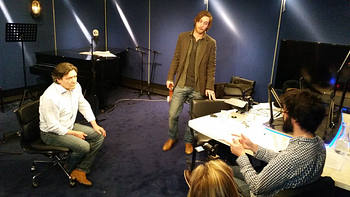
Recording characters’ voices with actors Pierre Bokma (Franck) and Reinout Scholten van Aschat (Victor)
You subscribe to the Blender Cloud for 10$ per month and you
have access to everything the Blender Institute does, their repository
for current and past projects, tutorials related to these projects, all
the assets of those projects. You also support Blender Development
related to those projects and help developing their vision for the
future of Blender and the artists using it.
Basically you support the Blender Institute developing tools,
assets and tutorials. And it’s also a new way of supporting software
development, a very transparent and clean way. You really get to see
what your money is used for. You can subscribe and unsubscribe anytime
you want, no extra fee or whatever commercial bulls****…
It’s the Blender Institute way of doing that with Blender,
some others are also doing other commercial models to support Blender,
help its development and improve its free learning database and assets.
But the Blender Intitute is the only one doing open movies or games so
far. So they’re also investing in art and it’s a risk both for them and
for the people that support it. But in a world where no major studios
are taking any risks anymore, or betting on developing talents, I think
it’s a very healthy “risk”.
In the long run, I’m pretty sure it’s the way to make things
that matter and last in the spotlight more than a week or two.
What’s in store for the future of Mathieu Auvray?
I hope we can find a way to make the full version of Cosmos
Laundromat because I really believe that what Esther wrote is some very
good material. We really have a unique and great feature film project
for independent CG animation made with Blender. But finding the money
for such a project is very difficult because, again, it’s a bet and
we’re in a period of crisis where money has to make money, even before
you pay one dollar…
I’m currently developing two TV series for kids based on comic
books with Autour de Minuit in France. But I’m also writing and
developing some personal projects. One of them I’ve been working on for
years, now. I hope to finance a pilot next year. So I’ll keep you
posted !

